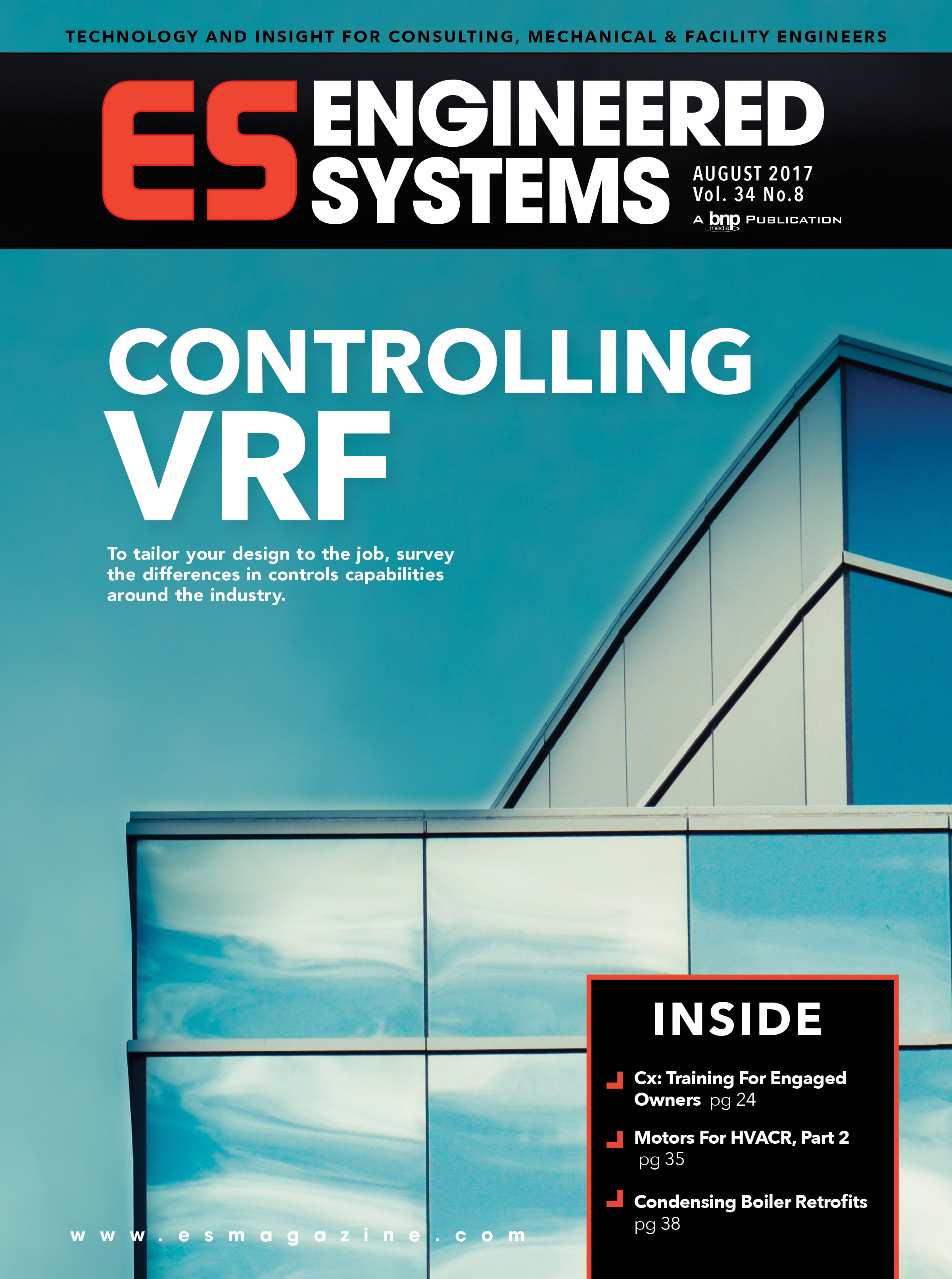The Definition
One comment I received about January’s recommissoining column was from a reader questioning the use of “continuous” instead of “continual.” This may be akin to discussing the definition of “is,” but it is an interesting exercise. If the two definitions are:
- Continuous: uninterrupted; unbroken.
- Continual: recurring regularly and frequently.
The continuous commissioning process has elements of both.
The “continuous” portion of the process is the fact that system performance data is monitored on an uninterrupted basis via a building automation system (bas) and/or standalone dataloggers. The process has elements of “continual” if the data collected is analyzed manually only at certain intervals (typically monthly). However, the “continuous” aspect persists if the bas is programmed to continuously evaluate the data collected and generate an output message if the measured parameters fall outside of their programmed ranges.
In either case, once the measured parameters (temperatures, ventilation rates, etc.) fall outside of their “normal” operating ranges, then the building operator will want to check out and perform tests on the “problem” system, similar to the original commissioning process.
The primary difference between recommissioning and continuous commissioning is that in continuous commissioning, the retesting process is undertaken only when the system performance warrants it, i.e., once the system exhibits probable operational problems. In recommissioning, the systems are retested on a regular (“continual”) basis, whether needed or not.
A Little Fine Tuning Is Needed
As with recommissioning, the continuous commissioning process can only be applied to buildings that have been commissioned (or retro-commissioned) in the first place. Continuous commissioning, unlike recommissioning, requires a “baseline” performance measurement following the initial commissioning process, i.e., when the systems are fine tuned and operating as efficiently as possible.In an existing building, it is also desirable to take baseline performance measurements prior to performing the retro-commissioning work in order to demonstrate the positive impact of the retro-commissioning process.
The post-commissioning baseline performance data is used as the information against which the continuously collected data is compared as part of the continuous commissioning process. Either manually or automatically, the data is evaluated throughout the life of the systems, and system modifications and fine tuning are undertaken on an “as needed basis” to keep the operating performance close to its documented optimum.
The continuous commissioning process is a dynamic one because buildings and the people in them are dynamic. The desired “baseline” performance criteria needs to be re-evaluated on a regular (continual) basis, perhaps annually, to make sure that it is achievable under the current building loads, usage, and schedules.
As with recommissioning, continuous commissioning is not something a facilities operation group can undertake in their “free time.” It requires a commitment to defining the desired performance parameters to be monitored; funding the purchase and installation of the monitoring equipment; programming the monitoring/trending software; programming the software for automatically evaluating the data collected or assigning and training someone to manually review the data collected; and updating the system to maintain meaningful baseline performance requirements.
The personnel and financial commitment by the operations group, however, should be more than paid back in energy savings (by avoiding otherwise undetected system inefficiencies), satisfied building occupants, and a reduction in unexpected repair costs associated with surprise equipment failures. ES


